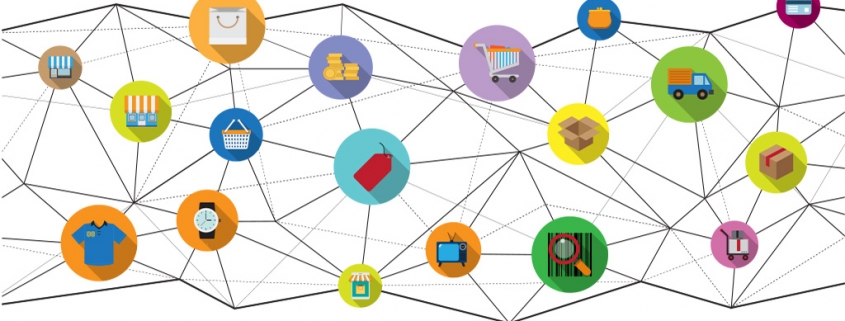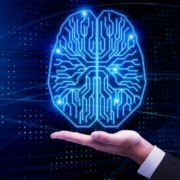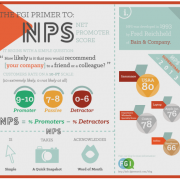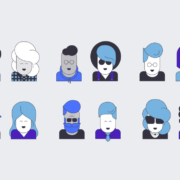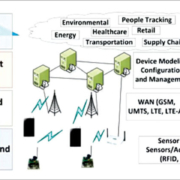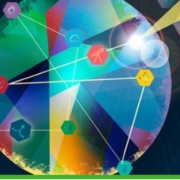Customer Journey Mapping Is at the Heart of Digital Transformation
Companies such as Uber, Spotify and Airbnb are disrupting their industries. Take Uber. The popular taxi-hailing app does not own any vehicles and yet provides transportation to some 8 million users. Music-streaming service Spotify lets music lovers listen to a wide range of artists, yet it does not own a radio station. And Airbnb, a provider of accommodations with more than a million listings across the globe, does not own any lodgings.
These startups are leveraging new technologies to disrupt their industries while making life easier for users. But digital transformation goes deeper than simply improving the customer experience. It is also increasingly used to transform business processes and interactions within a company to keep it relevant in the digital age.
“Typically, digital is associated only with providing a superior customer experience. But digital can also help create new business models, drive operational excellence and enhance employee engagement,” says Raman Sapra, senior vice president and global head of NTT DATA’s digital business services.
“Typically, digital is associated only with providing a superior customer experience. But digital can also help create new business models, drive operational excellence and enhance employee engagement.”–Raman Sapra
New digital tools are extending information collection and then helping to turn an otherwise overwhelming flood of information into actionable knowledge. For instance, telecom providers can use data analytics to help predict data loss or network deterioration, as well as prevent service disruptions. More generally, companies can use social media to connect better with their employees. Or, they can tap data analytics to make decisions faster and bring operational efficiencies.
But before embarking on a digital transformation, organizations need to first identify their business imperatives and priorities, Sapra says. They need to understand what their customers, employees, partners and other stakeholders desire. They also must identify the digital possibilities in their industry. Using these benchmarks as a foundation, organizations can tailor a digital strategy and roadmap, and then proceed to build their digital initiatives.
There is one critical tool for successful digital transformation — smart customer journey mapping. “It is at the heart of digital transformation,” says Sapra. Adds Mahesh Kolar, director of mobility applications at NTT DATA: “There are many different ways, like focus groups and surveys, to understand the customer journey. But we believe that customer journey mapping is vital for giving organizations the ‘Aha’ moment when it comes to understanding their digital possibilities.” And new digital tools are now making it possible to create a much deeper understanding of the journey.
Identifying Digital Touch Points
What exactly is customer journey mapping? “It is the definitive first step in the process of converting a current ‘as-is’ state to a future state that promises an enhanced customer experience,” says Siddharth Gaikwad, practice head of digital experience at NTT DATA. The term “customers,” he adds, does not only refer to end-users; it could be any stakeholder — such as employees or partners.
“A journey map is an illustrated representation of a customer’s expectations, experiences and reflections as it unfolds over time across multiple stages and touchpoints while using a product or consuming a service.”
“A journey map is an illustrated representation of a customer’s expectations, experiences and reflections as it unfolds over time across multiple stages and touchpoints while using a product or consuming a service.”–Siddharth Gaikwad
Take the booking of an airline ticket. Here, the journey mapping starts from the time the customer realizes the need to travel. It captures the customer’s various expectations at that stage. It then maps their actual experience of buying the ticket and even the emotions felt after the purchase. Expectations are thus benchmarked against actual experience.
By capturing the current “as is” state of a customer’s journey — in this case, the booking of an airline ticket — the map amplifies various pain points along the purchase path. For experience designers, questions that arise around the journey include the following: Do we know the customer’s context? Is the information about the various options adequate or even relevant? Are there too many details to be filled out multiple times? Is the whole exercise too time-consuming? Capturing the “as is” state can also predict likely future behavior.
Thereafter, in collaboration with domain experts across different parts of the organization and its extended eco-system, and using design methods like storytelling and card sorting, the map findings are converted into insights. Storytelling, the art of overlaying context, perspective and imagery around a user’s journey, combined with card sorting, the technique of identifying mental models or patterns, become important tools in rendering the “to-be” future-state. In creating the map, the organization can use the rapidly evolving elements of digital — analytics, mobile, social, the cloud and Internet of Things — to enhance the customer experience.
“By overlaying the digital possibilities upon customer journey maps, organizations are able to better visualize which aspects of their business they should focus on, which of the new technologies they should embrace and what new business models they can create,” says Gaikwad. “It helps them to realign their investments, technologies and business models so they can engage more effectively with customers, employees and partners.”
Patti Williams, a Wharton professor of marketing, points out that journeys help companies understand consumer decision-making. It reveals the types of information, sources, emotions and other factors that can influence them and their choices, she says.
Williams agrees that customer journey mapping is an important tool for transforming a business. “Journey mappings are deep, embedded consumer insights.” Developing a multilayered understanding of consumers and how they make choices in a contextual setting “offers companies the opportunity to change practices in a way that reflects the reality of consumer decision making.” Consumer journey mapping, she adds, “is at the center of all consumer-focused organizations and can transform many businesses.”
“Consumer journey mapping is at the center of all consumer-focused organizations and can transform many businesses.”–Patti Williams
And as Gaikwad points out, “very few non-consumer-focused organizations remain out there, and they will change very soon. Consumerization of the enterprise is driving that change.”
Overly simple customer journey models, however, will likely fall short, says Jerry (Yoram) Wind, a Wharton professor of marketing. It is crucial that mapping be dynamic. “Mapping is very difficult given the heterogeneity of all markets and [also because] the same consumer may have a totally different journey at different times because of different contexts.” In the airline case, for instance, consumers could be traveling for various reasons, such as a vacation, business trip or family emergency. “Thus, most maps, unless they are dynamic and include context, can be quite misleading.”
Customer journey mapping requires design, domain and facilitation skills. Typically, a customer journey map is created by using data from primary research, such as personal interviews, focus group sessions, brainstorming and shadowing, as well as secondary research such as gathering and collaborating over information from databases within the organization, websites, social media and so on. Many digital tools are growing rapidly in sophistication and usefulness, and enhancing the value of gleaned insights.
The first step is to define the exact area — for instance, product, service and task — where the organization wants improvement, and identify the “consumer.” For example, a hotel may want to improve its front desk service. Here, the “consumer” would be the customer-relations employees manning the front desk. But, if the hotel wants to enhance the self-check-in experience, the “consumer” would be the guests.
With the consumer defined, the user experience team then creates a “persona” based on the customer’s demographic and psychographic profile. This would include age, socioeconomic background, value systems, opinions, attitudes, lifestyle, likes and dislikes, and so on. Thereafter, this persona’s journey — comprising expectations, experience and reflections — is mapped across a specific task. These insights are then converted into touchpoints –where the organization literally makes a connection to the customer, whether via desktop or mobile, or through a web site or social media.
“The curious case of the touchpoint is that it does not work without context of the consumer,” says Gaikwad. This is where the new digital tools add a new dimension of value. “What better time than this digital age to mine that context — it’s available on the cloud, in the devices and all over social media,” he says.
In the case of guest check-in, some touchpoints suggested through journey mapping could be self-check-in hotel lobby kiosks. Based on the guests’ persona and their context, the kiosk could dispense personalized, magnetic access cards with QR codes (the quick response bar code), which, when scanned, could offer personalized suggestions.
“Mapping is very difficult given the heterogeneity of all markets and [also because] the same consumer may have a totally different journey at different times because of different contexts.”–Jerry (Yoram) Wind
Value Proposition
For instance, if the guest is a child, the access card could recommend relevant kid-friendly activities. For business travelers, it could offer details about convention centers and other business-related information. Kolar notes: “The key is to see how much personalization you can provide and how much of it you can contextualize around a given customer in a way that delights them, but at the same time is not intrusive.”
Thus, a series of connected maps covering each phase in the customer lifecycle can give an organization complete control over their capability to deliver a product or a service, Gaikwad says. In the hotel example, there could be different maps for check-in, housekeeping, concierge service, food and beverage service, and checkout. Typically, an accurate map takes up to a couple of weeks to create based on the persona, and “if done properly, it can have a shelf life of a couple of years, even in the current market where paradigm shifts are happening so regularly,” he adds.
The Way Forward
Williams believes customer journey maps should be updated frequently and often can involve an ongoing investment. Creating a journey map is an intensive process influenced by time and materials, so “budgets influence how frequently they can realistically be done. But as changes occur, they should be updated.” Williams adds that “different customer segments will have different journeys, so journeys should be understood at a segment level” as well.
One of the biggest challenges, as with so many initiatives, is getting senior management’s commitment. Successful customer journey mapping takes time and close collaboration. The effectiveness of a map depends in part on how well managers engage in the map creation process and how far into the future they can project as they analyze customer insights.
While converting journey map findings into actionable insights about digital touchpoints requires senior members across functions to brainstorm together, this is often easier planned than executed. Busy executives typically are preoccupied with operations, and many organizations work in silos — so the all-important coordination can be challenging. Storytelling and card sorting come handy to motivate, incentivize and create stickiness among diverse groups to help keep on track.
The ROI
While the value of traditional journey maps is widely accepted, there remains the issue of setting metrics for the return on investment (ROI) for the latest, digital approaches. At present, “I don’t know if there is a sure way of defining a clear return on investment for customer journey mapping,” says Kolar. “We think it is a powerful tool to understand the context of the users and to take them from their current state to a heightened state of customer delight.” The new digital tools are helping. “With advanced analytics, the value, effectiveness and cost of an investment can be understood early on and course corrections can be made to minimize impact.”
Kolar believes digital customer journey mapping is here to stay. Because of the tremendous reach of social media, a single vocal customer or employee can have a big business impact. This makes it all the more important for organizations to be on top of their game.
“My sense is customer journey mapping will become a mandatory tool for digital transformation. Enterprises will begin to do customer journey mapping as the first part of their planning activities.”
Adds Sapra: “Most customer journeys of today are rendered as static maps. As digital tools advance even further, “I think they will become a lot more dynamic. They will become a current document that will get updated in real time in this connected world. That’s when the map will become even more valuable.”

